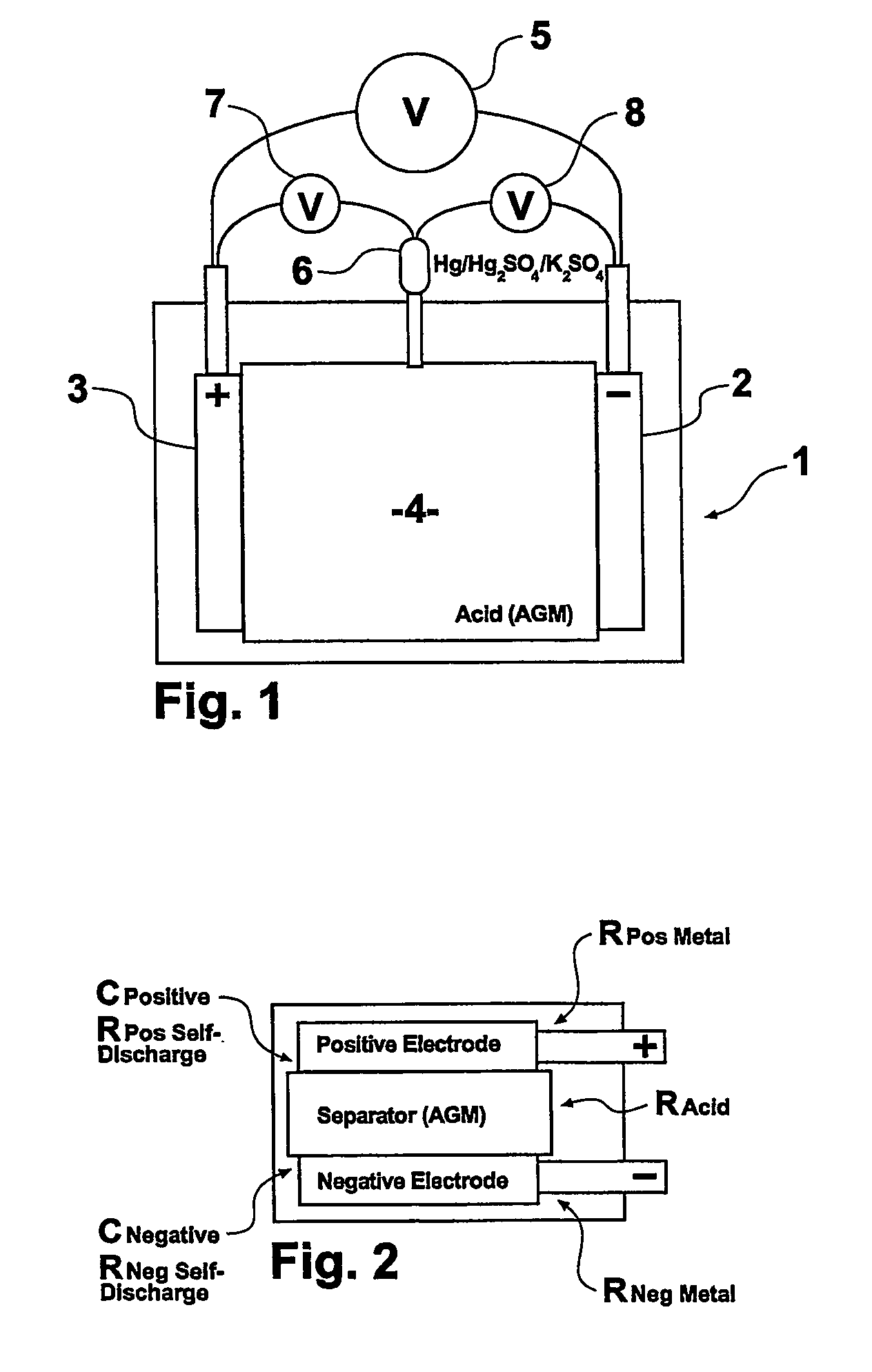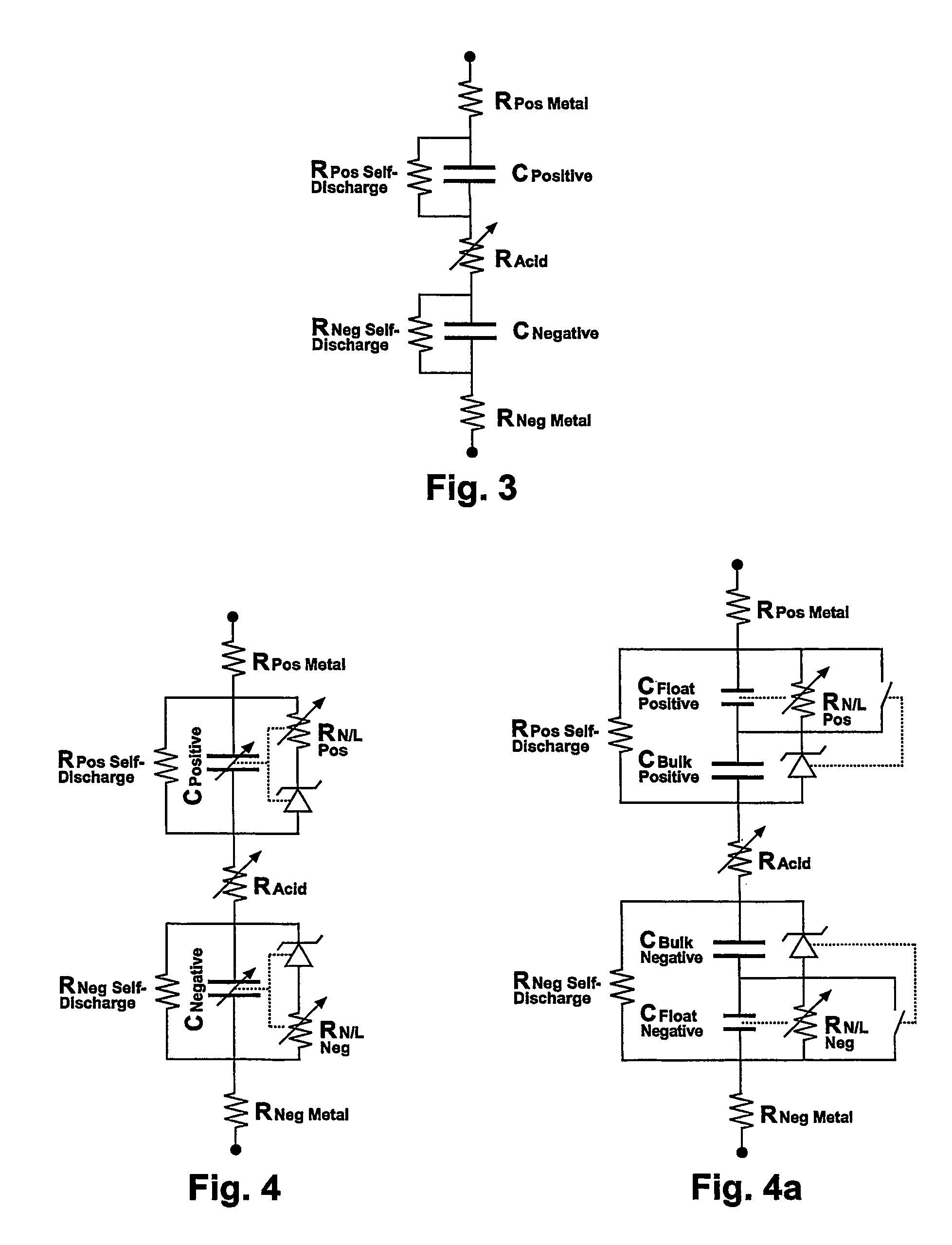Battery float management
a technology of battery float and float current, which is applied in the direction of cell components, sustainable manufacturing/processing, instruments, etc., can solve the problems of excessive corrosion of the positive grid, inability to supply the required terminal voltage the current at the required voltage, and large amounts of energy storag
- Summary
- Abstract
- Description
- Claims
- Application Information
AI Technical Summary
Benefits of technology
Problems solved by technology
Method used
Image
Examples
Embodiment Construction
[0060]The invention allows battery float management to be implemented through modelling and sensing the battery positive and negative electrode contributions. Further information relating to the invention and its implementation can be found in the PhD thesis of Phillip M Hunter entitled “VLRA Battery Float Charge: Analysis and Operation” which is incorporated herein by reference. The invention has the advantage that additional hardware is not required. Electrode polarisation can be sent directly from the battery external terminals by the use of software. Knowing the status of electrode polarisation allows the state of charge of their treat identified. Therefore the required action can be implemented to recover balanced charge polarisation before any permanent damage to the battery takes place. The invention may also be used to identify any damage to the battery that has taken place through successive charge or test procedures.
[0061]Through modelling the steady state and transient ch...
PUM
| Property | Measurement | Unit |
|---|---|---|
| voltage | aaaaa | aaaaa |
| voltage | aaaaa | aaaaa |
| float voltage | aaaaa | aaaaa |
Abstract
Description
Claims
Application Information
 Login to View More
Login to View More - R&D
- Intellectual Property
- Life Sciences
- Materials
- Tech Scout
- Unparalleled Data Quality
- Higher Quality Content
- 60% Fewer Hallucinations
Browse by: Latest US Patents, China's latest patents, Technical Efficacy Thesaurus, Application Domain, Technology Topic, Popular Technical Reports.
© 2025 PatSnap. All rights reserved.Legal|Privacy policy|Modern Slavery Act Transparency Statement|Sitemap|About US| Contact US: help@patsnap.com



